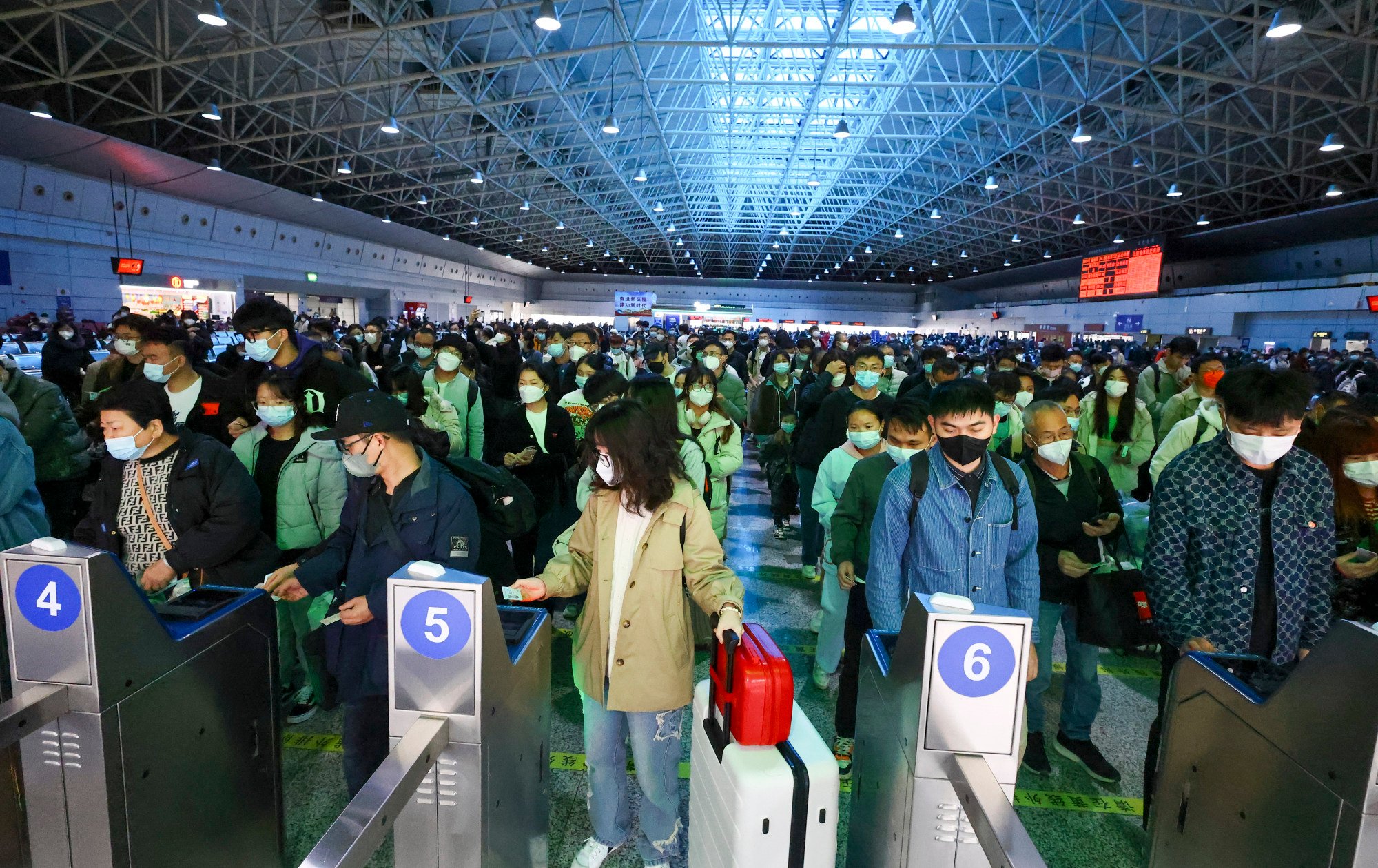
Explainer | Will Hong Kong’s new Octopus card be a ‘game changer’ for travellers to mainland China?
- Scores of elderly Hongkongers were seen lining up to grab the ‘Octopus – China T-Union Card’ on its launch day
- Gary Ng, senior economist at Natixis Corporate and Investment Bank, says popularity of new card may stimulate more cross-border spending
Octopus, the ubiquitous payment platform in Hong Kong, has secured what may be its next big win in the form of a new card that allows users to top-up with ease and travel on public transport in 336 mainland Chinese cities.
Scores of elderly Hongkongers were seen lining up to buy the “Octopus – China T-Union Card” as it launched on Tuesday.
For these Hongkongers, the product may offer a solution to dealing with mainland app payments that require a bit more tech sophistication.
The Post digs into how this card can benefit users.
1. How does the card work?
Holders of the new card can tap for rides on public transport bearing the “China T-Union” logos. This covers 38,000 public bus routes and 285 rail or ferry services on the mainland.
The China T-Union project is a nationwide one-card payment system developed in recent years.
While cardholders can top up the value in Hong Kong dollars, fares will be deducted in yuan, according to the company.
Hong Kong’s new Octopus card offering mainland China travel gets warm reception
The card, which has a stored value limit of HK$3,000 (US$384), is automatically updated with the market foreign exchange rate effective upon top-up at kiosks or through a conversion on the app through money in the e-wallet.
The exchange rate is valid for a maximum of 90 days. But the card cannot be used to pay for other transactions such as retail and dining.
The card, which retains all the original Octopus functions, can also be used in Hong Kong with multiple top-up options.
Users can add value through the Octopus app, opt for automatic top-up services or visit designated top-up points to add value using cash.
Cardholders on the mainland can also add value through the Octopus app. For those in Shenzhen, they can top up at the Shenzhen UnionPay EPS Kiosk.

2. Where can I purchase the new card?
Starting from March 26, consumers can buy the new cards for HK$88 without a deposit at more than 7,000 Circle K convenience stores across the city, or the customer service centres at seven MTR stations: Hung Hom, Sheung Shui, Fanling, Lok Ma Chau, Kowloon Tong, Tsuen Wan and Admiralty.
3. What are the limitations of the new card?
When the stored value exceeds HK$1,000, some mainland card readers may not accurately display the balance due to varying limits in different cities across the border or differences in display settings.
In such instances, users can use the Octopus app to check their balance or transaction history.
4. How does it differ from other cross-border transport cards?
The previous cross-border Octopus cards linking Hong Kong and mainland cities, such as Shenzhen and Guangzhou, required users to have a separate yuan account for their cross-border cards.
But the new version allows users to top up their balance with Hong Kong dollars.

5. Will the new card encourage more spending on the mainland?
Many people, especially elderly residents, queued to buy the new Octopus card at Kowloon Tong MTR station on the first day of its sale.
One said the card would be a “game changer” for elderly people who struggled to use QR wallets on their phones to pay for the fares on the mainland.
Since the full reopening of the border between the city and the mainland last year, there has been a sustained surge in cross-border shopping, fuelled by the lower prices in the north compared with Hong Kong.
According to statistics from the Hong Kong Immigration Department, there were more than 50 million visits from the city to the mainland in 2023.
New CEO of Hong Kong’s Octopus aims to shift service ‘from plastic to phone’
Gary Ng Cheuk-yan, a senior economist with Natixis Corporate and Investment Bank, said the popularity of the new card might stimulate more cross-border spending.
“The streamlined transport payment will further reduce the hurdles and increase the attractiveness of trips to mainland China. It is likely to be most beneficial for older people and foreigners living in Hong Kong regarding convenience,” he said.
The economist added that the card might not be as game-changing, given its usage was limited to public transport.
“[Visiting the mainland] requires many more local apps to survive, such as taxis and other payments, which isn’t easy for someone not living in the same ecosystem,” Ng said.

